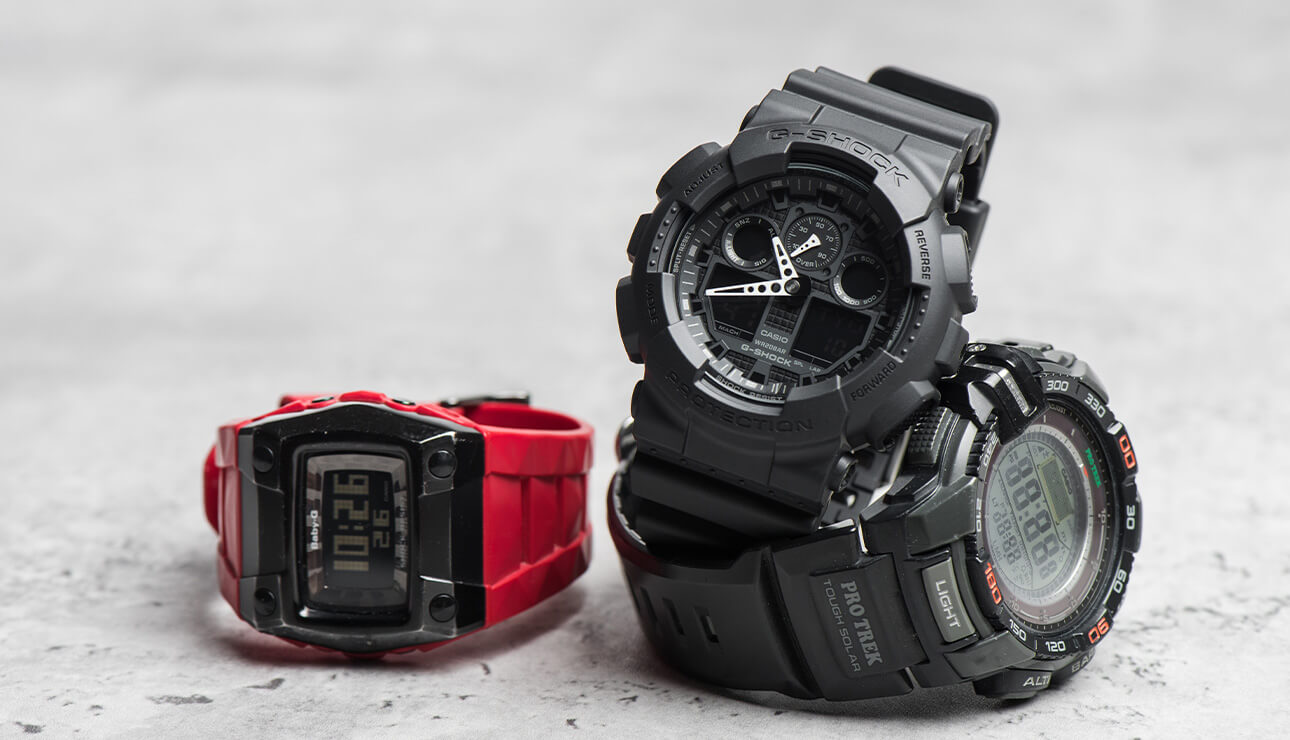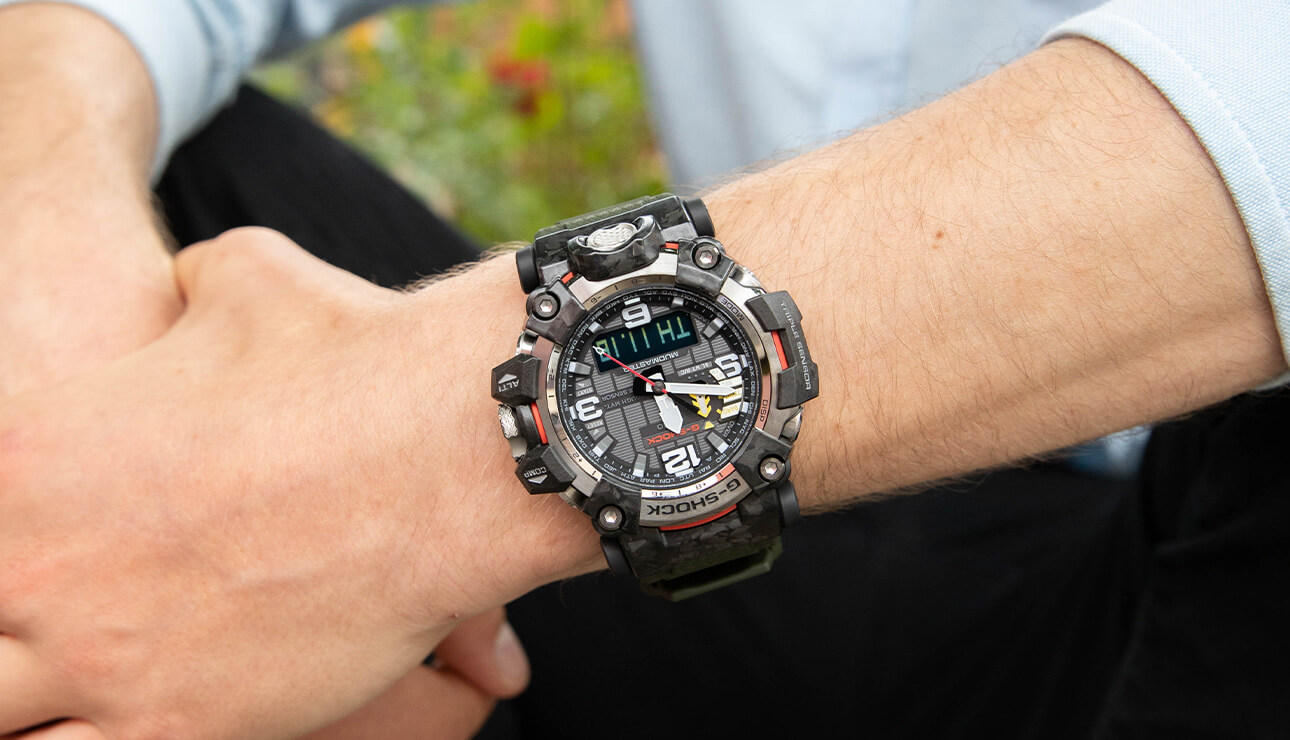The Casio G-Shock maintains its reputation as the world's toughest watch, and there is a plethora of history across 30 years that has led it to be what it is today. The G-Shock vision was first conjured by Kikuo Ibe, who after dropping a special watch given to him by his Father and watching it shatter in front of his eyes, vowed to make a watch that was indestructible. This timepiece would be able to withstand major drops and impacts like nothing else on the market.
In 1981, the “Tough Team” embarked on a project to make his vision a reality. In the early stages of development, they worked towards the “Triple 10 Concept”. This idea involved three key aspects, the watch must withstand a 10-metre drop, have 10Bar (100 metre) water resistance and have a 10-year battery life.

Ibe’s big revelation occurred during a stroll through the park when he witnessed a girl playing with a bouncy ball. He realised that the centre of the ball does not suffer the same shock that the exterior does, and so, he was able to visualise the shock-resisting system that forms the basis of all G-Shock watches. The Tough Team set out to design the first watch with this structure at the core of their model, later dubbed the “floating model”.
After a long haul of rigorous testing and 200 different prototypes, the group finally launched two models in April 1983. The black and red DW-5000C-1A and the black and gold DW-5000C-1B. While an exciting release, the team had to work through some serious difficulties.

Every aspect of the G-Shock watch is made with durability at its core. The case of the G-Shock is hollow and the timekeeping module is supported with soft gel cushioning material at only a few key points within, along with additional cushioning material. Protruding points on the case and bezel are made of urethane and protect the buttons and glass from damaging impacts and even the strap itself is specifically designed to aid in isolating the watch from impacts. These features help protect the G-Shock from concussions, high G-forces (such as auto or air racing) and heavy vibrations.
However, the watch was not intended to be completely indestructible. Ibe noted that while a human may be subject to many different dangerous situations, a fall would be the toughest thing that a person could endure and still live. Hence, the watch was intended to survive any fall that a person could survive. This is where the “G” in the name came from.
Making its mark in the industry with a peculiar style and stubborn toughness. They launched a line with a unique blend of utilitarian-focused and street-cred centric followers who made the line immensely popular. Throughout the years, the company has achieved many milestones that shaped the course of G-Shock, making it what it is today.

In 1989, the first analog/digital watch was released, a design that we still see utilised in many of their watches today. The first true divers watch came about in 1993, dubbed the Frogman DW-6300, boasting an impressive 20-atmosphere water resistance. Going on from this, the Frogman DW-8200 was released in 1995 and offered the first titanium model.
In 1994, Casio debuted Baby-G as a women’s watch that has the same tough concept as G-Shock. Complete with the same shock-resistant structure and 100-metre water resistance, with unique designs and colour combinations that cater to a feminine appeal, the Baby-G opened Casio G-Shock to an ever wider audience.

Over the years, it seems that G-Shock continues to invent more and more new technologies that let their models really stay at the top of the industry. After seeing a dip in sales at the turn of the century in 2000, they created the first radio-controlled G-Shock that could receive calibration signals from one of six worldwide locations, ensuring more accurate timekeeping. Other features and functions included resistance to low temperatures, dirt and mud, built-in temperature and pressure sensors, Bluetooth connectivity and more. With the rise of popularity in smart watches, G-Shock are also trying their hand at entering the smartwatch game.
What has kept G-Shock from becoming a horological equivalent of other popular 1990s trends like chain wallets and choker jewellery, is their ability to reinvent themselves to keep up with the times. By introducing premium materials like titanium into their repertoire, G-Shock began to move beyond street style alone, and made their debut into the luxury market with high-end craftsmanship and artistry.

A company that is sitting comfortably as the leaders in their sector, the G-Shock brand has established themselves as an innovative, ahead-of-the-times company. Long a favourite of a variety of audiences from first responders and law enforcement to athletes, outdoorsmen and hip-hop artists, the G-Shock remains on its stead incline in quality, performance, style and popularity. This is a rare product that turned into a cultural phenomenon, marking its place in the market not only by the durability of the G-Shock but the durability of its popularity.













